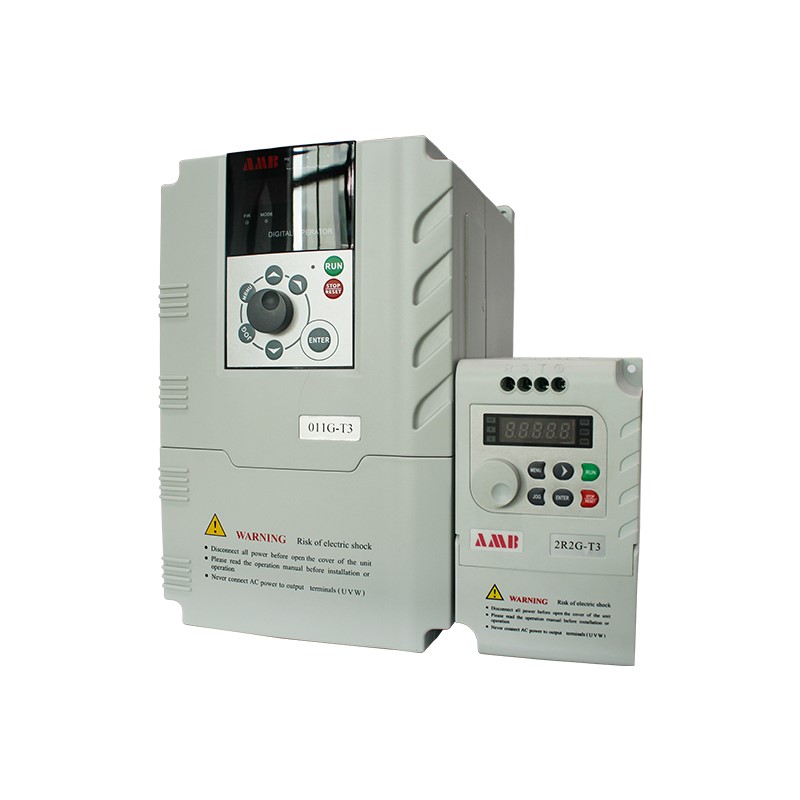
1. Causes of torque increase
It is important to set up the torque lifting function. The frequency converter is widely used in V / F control mode. When the power frequency of the motor decreases, the speed of the motor will also decrease. If the load torque remains unchanged, its output power will also decrease. According to the principle of energy conservation, if the torque of the load is constant, the current cannot be reduced. Only by reducing the voltage can the energy balance be maintained between the input and output. If the corresponding voltage of motor input is UX and the frequency drop is FX, then:
① Voltage regulation ratio Ku = UX / UN
② Frequency regulation ratio KF = FX / FN
Where, UN and FN. They are rated voltage and rated frequency respectively. When Ku = KF, the voltage and frequency decrease in direct proportion. Since the speed of the motor is determined by frequency, the specific reflection of the decrease in the proportion of output power is the reduction of electromagnetic torque, which reduces the load capacity of the motor. If the load capacity of the motor is not reduced, when the voltage and frequency decrease at the same time, the voltage should be appropriately increased on the basis of Ku = KF to make Ku > KF. Since the purpose of increasing voltage is to increase torque, it is called torque improvement, also known as torque compensation. The amount of torque increase reflects the ratio of voltage to frequency. Debugging torque increase is actually to adjust U / F ratio
2. U / F curve of torque increase
Almost all inverter products provide dozens of U / F curves for users to choose. Due to the different models of products, their U / F curves are roughly linear, polygonal and arbitrary polygonal. It can be selected according to the load characteristics of the motor and the instructions of the inverter user manual.
3. Influence of U / F ratio on load
Torque increase is to compensate for the low speed torque reduction caused by the resistance of motor stator winding, and increase the low frequency range U / F. When the U / F ratio is too small, the motor is difficult to start or can be started but can not carry load at low frequency. If the U / F ratio is too large, the motor will not save energy in low frequency operation, and even the inverter will trip due to the high saturation of the magnetic circuit.
The above mentioned is only a basic influence situation, which should be considered, set and adjusted according to the characteristics of the load carried by the motor on site. For constant torque load with wide speed range, such as belt conveyor, it is necessary to consider whether the dynamic load can be carried in low frequency operation when setting, and the U / F should be set larger. For light load startup and heavy load operation objects, the torque can not be increased or increased less; for fan and pump load, the curve with weak reduction characteristics should be selected at low frequency. Frequency converters are designed with "automatic" for torque lifting. If it is set to automatic, the voltage during acceleration can be automatically increased to compensate the starting torque, so that the motor can be accelerated smoothly. For novices with insufficient debugging experience or unclear load characteristics, it is a good choice to use "automatic". If manual compensation is used, the better curve can be selected according to the load characteristics, especially the starting characteristics of the load. For variable torque load, if it is not selected properly, the output voltage at low speed will be too high, which will waste electric energy. Even when the motor starts with load, the current will be large and the speed will not go up.

|
|

|
| The public, | Mobile station |
 0755-81719517
0755-81719517
|
|
 0755-81719530 0755-81719530 |
 [email protected] [email protected] |
 Floor 1, 5 and 6, building 7, lijincheng science and technology industrial park, gongye dong road, longhua new district, shenzhen Floor 1, 5 and 6, building 7, lijincheng science and technology industrial park, gongye dong road, longhua new district, shenzhen |
|